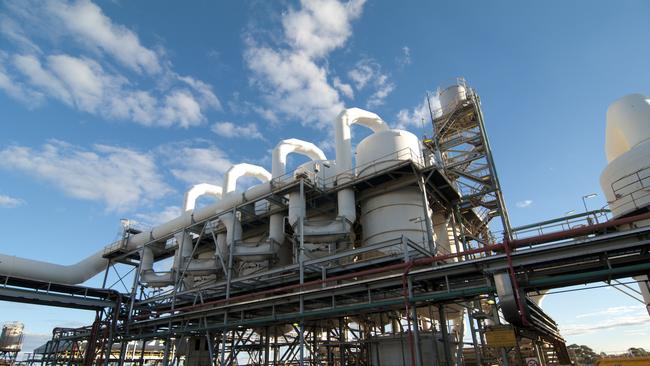
Nickel has always had a reputation for being the most volatile of commodities.
Back in 2007, BHP’s stainless steel materials division, including Nickel West, famously out-earned its iron ore operations by more than $US1bn as the price of the metal soared to more than $US54,000 a tonne.
Within 18 months, the nickel price had crashed to below $US9000 a tonne, and a suite of WA nickel mines had closed down.
That has been the story of the commodity for decades – a relatively small market and a swinging price has meant that nickel has always been a tough industry.
But the battery revolution was supposed to fix that.
Fifteen years ago, nickel was primarily used to make stainless steel – its use in batteries was an afterthought in global markets.
As sales of electric vehicles have grown, so has demand for nickel – and the outlook was supposed to be bright.
But it is a second structural change in the nickel market that has brought Australian miners undone.
Nickel deposits are primarily found in two forms – sulphide and laterite. Sulphide deposits are more rare and generally smaller, but are higher grade and easier to process – sulphide deposits make up the bulk of Australia’s nickel mines.
Laterite deposits are generally larger, but low grade and notoriously difficult to process – to liberate the nickel into a high-quality product a high pressure acid leach plant is needed, which has been both expensive and unreliable.
Alternatively, the ore can be roasted and turned into a nickel pig iron (NPI) in a blasting furnace for use in stainless steel production.
Indonesia is rich in laterite deposits and, until relatively recently, sent the bulk of the low-grade ore to China for use in the steel sector.
But from 2009, the Indonesian government progressively began to restrict the export of raw ores, demanding that companies that wanted access to the country’s ore invest in downstream processing.
The policy has been a spectacular success, drawing a flood of Chinese investment into the country, and dramatically lifting the country’s nickel exports over the past few years – from 770,000 tonnes of nickel in 2019, half of which was raw ore, to about 1.9 million tonnes in 2023, including about 1.4 million tonnes of NPI, according to industry figures.
Allied to that is China’s discovery of a way to turn NPI into nickel matte – a pure form of nickel that can be refined to battery-grade material.
NPI production from laterite sources is relatively cheap, but has caused enormous environmental damage and releases far more carbon dioxide than processing nickel sulphide ores.
Australian miners argue that nickel made from “dirty” NPI should be sold separately to cleaner nickel products, and consumers buying electric vehicles should be told where their battery metals came from.
But that would take a widespread change in the way nickel is sold as refined to become a reality.
As it is, with production costs in Australia rising, and a dearth of new high-grade discoveries, the flood of cheap Indonesian nickel has sent prices tumbling and driven the Australian nickel industry to its current crisis.


What’s gone so badly wrong for Australian nickel?